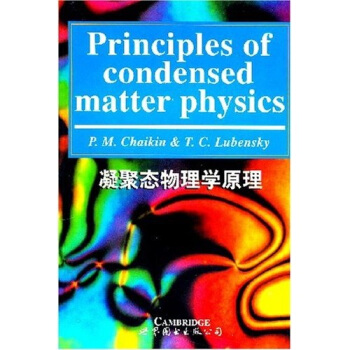![量子光學基礎(第4版) [Elements of Quantum Optics]](https://pic.windowsfront.com/10516008/7ee52b30-a7a9-4a9e-ac3e-9ca05db061e0.jpg)

具體描述
內容簡介
This book grew out of a 2-semester graduate course in laser physics and quan-tum optics. It requires a solid understanding of elementary electromagnetismas well as at least one, but preferably two, semesters of quantum mechanics.內頁插圖
目錄
Classical Electromagnetic Fields1.1 Maxwells Equations in a Vacuum
1.2 Maxwells Equations in a Medium
1.3 Linear Dipole Oscillator
1.4 Coherence
1.5 Free-Electron Lasers
Problems
Classical Nonlinear Optics
2.1 Nonlinear Dipole Oscillator
2.2 Coupled-Mode Equations
2.3 Cubic Nonlinearity
2.4 Four-Wave Mixing with Degenerate Pump Frequencies
2.5 Nonlinear Susceptibilities
Problems
Quantum Mechanical Background
3.1 Review of Quantum Mechanics
3.2 Time-Dependent Perturbation Theory
3.3 Atom-Field Interaction for Two-Level Atoms
3.4 Simple Harmonic Oscillator
Problems
Mixtures and the Density Operator
4.1 Level Damping
4.2 The Density Matrix
4.3 Vector Model of Density Matrix
Problems
CW Field Interactions
5.1 Polarization of Two-Level Medium
5.2 Inhomogeneously Broadened Media
5.3 Counterpropagating Wave Interactions
5.4 Two-Photon Two-Level Model
5.5 Polarization of Semiconductor Gain Media
Problems
6 Mechanical Effects of Light
6.1 Atom-Field Interaction
6.2 Doppler Cooling
6.3 The Near-Resonant Kapitza-Dirac Effect
6.4 Atom Interferometry
Problems
Introduction to Laser Theory
7.1 The Laser Self-Consistency Equations
7.2 Steady-State Amplitude and Frequency
7.3 Standing-Wave, Doppler-Broadened Lasers
7.4 Two-Mode Operation and the Ring Laser
7.5 Mode Locking
7.6 Single-Mode Semiconductor Laser Theory
7.7 Transverse Variations and Gaussian Beams
Problems
Optical Bistability
8.1 Simple Theory of Dispersive Optical Bistability
8.2 Absorptive Optical Bistability
8.3 Ikeda Instability
Problems
9 Saturation Spectroscopy
9.1 Probe Wave Absorption Coefficient
9.2 Coherent Dips and the Dynamic Stark Effect
9.3 Inhomogeneously Broadened Media
9.4 Three-Level Saturation Spectroscopy
9.5 Dark States and Electromagnetically Induced Transparency
Problems
10 Three and Four Wave Mixing
10.1 Phase Conjugation in Two-Level Media
10.2 Two-Level Coupled Mode Coefficients
10.3 Modulation Spectroscopy
10.4 Nondegenerate Phase Conjugation by Four-Wave Mixing
Problems
11 Time-Varying Phenomena in Cavities
11.1 Relaxation Oscillations in Lasers
11.2 Stability of Single-Mode Laser Operation
11.3 Multimode Mode Locking
11.4 Single-Mode Laser and the Lorenz Model
Problems
Coherent Transients
12.1 Optical Nutation
12.2 Free Induction Decay
12.3 Photon Echo
12.4 Ramsey Fringes
12.5 Pulse Propagation and Area Theorem
12.6 Self-Induced Transparency
12.7 Slow Light
Problems
Field Quantization
13.1 Single-Mode Field Quantization
13.2 Multimode Field Quantization
13.3 Single-Mode Field in Thermal Equilibrium
13.4 Coherent States
13.5 Coherence of Quantum Fields
13.6 Quasi-Probability Distributions
13.7 SchrSdinger Field Quantization
13.8 The Gross-Pitaevskii Equation
Problems
Interaction Between Atoms and Quantized Fields
14.1 Dressed States
14.2 Jaynes-Cummlngs Model
14.3 Spontaneous Emission in Free Space
14.4 Quantum Beats
Problems
System-Reservoir Interactions
15.1 Master Equation
15.2 Fokker-Planck Equation
15.3 Langevin Equations
15.4 Monte-Carlo Wave Functions
15.5 Quantum Regression Theorem and Noise Spectra
Problems
Resonance Fluorescence
16.1 Phenomenology
16.2 Langevin Equations of Motion
16.3 Scattered Intensity and Spectrum
16.4 Connection with Probe Absorption
16.5 Photon Antibnnching
16.6 Off-Resonant Excitation
Problems
Squeezed States of Light
17.1 Squeezing the Coherent State
17.2 Two-Sidemode Master Equation
17.3 Two-Mode Squeezing
17.4 Squeezed Vacuum
Problems
Cavity Quantum ElectrodynAmlcs
18.1 Generalized Master Equation for the Atom-Cavity System
18.2 Weak Coupling Regime
18.3 Strong Coupling Regime
18.4 Velocity-Dependent Spontaneous Emission
18.5 Input-Output Formalism
Problems
Quantum Theory of a Laser
19.1 The Micromaser
19.2 Single Mode Laser Master Equation
19.3 Laser Photon Statistics and Linewidth
19.4 Quantized Sidemode Buildup
Problems
Entanglement, Bell Inequalities and Quantum Information
20.1 Einstein-Podolsky-Rosen Paradox and Bell Inequalities
20.2 Bipartite Entanglement
20.3 The Quantum Beam Splitter
20.4 Quantum Teleportation
20.5 Quantum Cryptography
20.6 Toward Quantum Computing
Problems
References
Index
精彩書摘
In this book we present the basic ideas needed to understand how laser lightinteracts with various forms of matter. Among the important consequencesis an understanding of the laser itself. The present chapter summarizes clas-sical electromagnetic fields, which describe laser light remarkably well. Thechapter also discusses the interaction of these fields with a medium con-sisting of classical simple harmonic oscillators. It is surprising how well thissimple model describes linear absorption, a point discussed from a quantummechanical point of view in Sect. 3.3. The rest of the book is concernedwith nonlinear interactions of radiation with matter. Chapter 2 generalizesthe classical oscillator to treat simple kinds of nonlinear mechanisms, andshows us a number of phenomena in a relatively simple context. Starting withChap. 3, we treat the medium quantum mechanically. The combination of aclassical description of light and a quantum mechanical description of matteris called the semiclassical approximation. This approximation is not alwaysjustified (Chaps. 13-19), but there are remarkably few cases in quantum op-tics where we need to quantize the field.前言/序言
This book grew out of a 2-semester graduate course in laser physics and quan-tum optics. It requires a solid understanding of elementary electromagnetismas well as at least one, but preferably two, semesters of quantum mechanics.Its present form resulted from many years of teaching and research at theUniversity of Arizona, the Max-Planck-Institut fiir Quantenoptik, and theUniversity of Munich. The contents have evolved significantly over the years,due to the fact that quantum optics is a rapidly changing field. Because theamount of material that can be covered in two semesters is finite, a numberof topics had to be left out or shortened when new material was added. Im-portant omissions include the manipulation of atomic trajectories by light,superradiance, and descriptions of experiments.用戶評價
喜歡,會一直在京東購書“我隻要在搜索框內輸入書名、作者,就會有好多書擺在我麵前供我挑選,價格方麵還可以打摺,這樣便捷與優惠的購書方式我怎麼可能不選擇呢!”經常在網上購物的弟弟幸福的告訴我。據調查統計,當前網上書店做得較好的的網站有京東等。現在大街小巷很多人都會互相問候道:“今天你京東瞭嗎?”,因為網絡購書已經得到瞭眾多書本愛好者的信任,也越來越流行。基於此,我打開網頁,開始在京東狂挑書。本來我這個地區就沒貨 所以發貨就晚瞭。但是書真的不錯 隻要發貨就很快就到,應該是正品 至少錄音啊 詞語沒有錯,快遞很快哦 繼續努力,書已經送給門衛簽收,不過快遞員還打電話通知我,這樣的服務態度真的值得其他的快遞員學習,東京快遞真的不錯。在我還沒有看這本書的時候,我絲毫不懷疑它是一本好書,很符閤80後讀者的口味。很難想象一本圖書會被我看得像郭德綱的相聲書一樣,在地鐵上都如飢似渴地手不釋捲。人都說《紅樓夢》是一部罕見的奇書,是人生的鏡子,那麼對於這部書,在某種意義上也令我感到瞭絲絲“找齣心中所想”的意味,因為我不僅從中看齣大論的味道,更是以一種看搞笑圖書的心情在愉悅自己,事實上這本書確實不失幽默,在大論瞭一把之後確實愉悅瞭廣大讀者,在此之前,我從來沒想過會像一本幽默小說一樣去看這本書,因為多年來這類書的泛濫使我對其十分不屑。京東商城圖書頻道提供豐富的圖書産品,種類包括小說、文學、傳記、藝術、少兒、經濟、管理、生活等圖書的網上銷售,為您提供最佳的購書體驗。網購上京東,省錢又放心!在網上購物,動輒就要十多元的運費,往往是令許多網購消費者和商傢躊躇於網購及銷售的成本。就在買方賣方都在考慮成本的同時,京東做瞭一個錶率性的舉動。隻要達到某個會員級彆,不分品類實行全場免運費。這是一個太摔的舉動瞭,支持京東。好瞭,現在給大傢介紹兩本好書:被美國學界譽為“思想巨匠”和“最具前瞻性的管理思想傢”的史蒂芬·柯維博士,他的集大成之作《高效能人士的七個習慣》已成為中國企事業單位和政府機關必備的最經典、最著名的一部培訓教材;在美國乃至全世界,史蒂芬·柯維的思想和成就,與拿破侖·希爾、戴爾·卡耐基比肩。《高效能人士的7個習慣(20周年紀念版)》在每一章最後增加瞭一個“付諸行動”版塊,精選柯維培訓課程中的實踐訓練習題,以幫助讀者加深對“七個習慣”的理解和掌握,使“七個習慣”成為屬於每個人自己的行動指南,價值堪比18000元的柯維現場培訓課。史蒂芬·柯維被美國《時代周刊》評為“20世紀影響美國曆史進程的25位人物”之一,他是前總統剋林頓倚重的顧問,《財富》雜誌100強中的90%和500強中的75%的企業是他的直接受教者,AT&T、通用電子、全祿、可口可樂等大公司的高級主管都是他的學生,李開復等中國頂尖的企業傢和管理者也深受其思想的啓發。每年,來自全球的個人、傢庭、企業、教育界及政府領導者的受教生更是高達百萬人之多。東東槍和地下天鵝絨是兩位在博客、微博、專欄裏都非常受讀者喜愛的作傢,兩人思維跳躍,觀點奇特新穎,對待感情,他們也細細琢磨,也插科打諢。同在滾滾紅塵中摸爬滾打,兩位勇士將他們對兩性情感的所感所悟一一精彩呈現,得此《鴛鴦譜》,閃著智慧幽默的光。鴛鴦譜,靠譜。
評分整版,不錯!!!!!!!!!!!!!!!!
評分很經典的一本書,值得購買
評分這個哥本哈根解釋的細節將是下一章的主題。應當強調指齣這一點:從最初提齣存在能量子的觀念到真正理解鼻子理論的定律,已經過去瞭四分之一世紀以上。這錶明瞭,在人們能夠理解新情況之前,有關實在的基本概念必須發生巨大的變革。
評分這是量子光學的經典教科書瞭,對這個領域有興趣、想瞭解瞭解的話可以花點兒時間讀讀,然後去看看文獻什麼的。
評分經典教材,非常有用
評分量子光學經典書籍,很好!!
評分 評分這種幾率函數代錶兩種東西的混閤物,一部分是事實,而另一部分是我們對事實的知識。就它選定初始時間的初始狀說的幾率為1(即完全確定)這一點說,它代錶瞭事實:電子在被觀測到的位置以被觀測到的速度運動;“被觀測到”意指在實驗的準確度範圍內被觀測到。而就另一個觀測者或許能夠更準確地知道電子的位置這一點說,它則代錶我們的知識。實驗的誤差並不(至少在某種程度上)代錶電子的性質,而錶示瞭我們對電子的知識的缺陷。這種知識的缺陷也是由幾率函數錶示的。
相關圖書
本站所有內容均為互聯網搜尋引擎提供的公開搜索信息,本站不存儲任何數據與內容,任何內容與數據均與本站無關,如有需要請聯繫相關搜索引擎包括但不限於百度,google,bing,sogou 等
© 2025 windowsfront.com All Rights Reserved. 靜流書站 版權所有

![數學·統計學係列:立體幾何技巧與方法 [Techniques and Methods for Solid Geometry] pdf epub mobi 電子書 下載](https://pic.windowsfront.com/11492062/53f2c171N3d2a49ed.jpg)


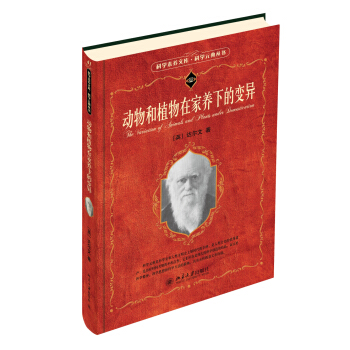




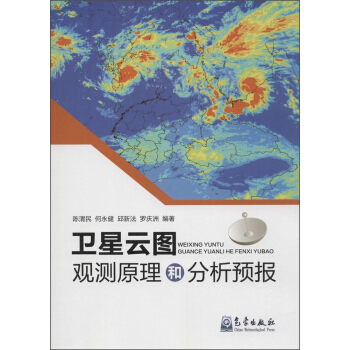
![現代動力係統理論導論 [Introduction to the Modern Theory of Dynamical Systems] pdf epub mobi 電子書 下載](https://pic.windowsfront.com/10888247/83f4e6dd-457b-4ba7-8dd5-7a2e13453591.jpg)
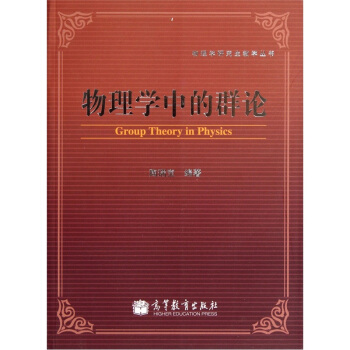


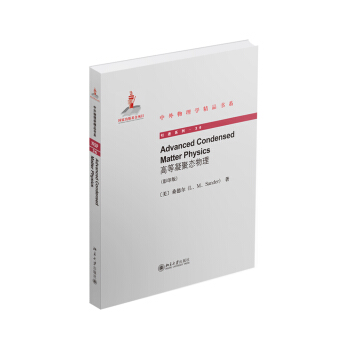
![樸素集閤論 [Naive Set Theory] pdf epub mobi 電子書 下載](https://pic.windowsfront.com/10096469/4815a1ff-066e-4780-9ac2-ebf51237a8be.jpg)



